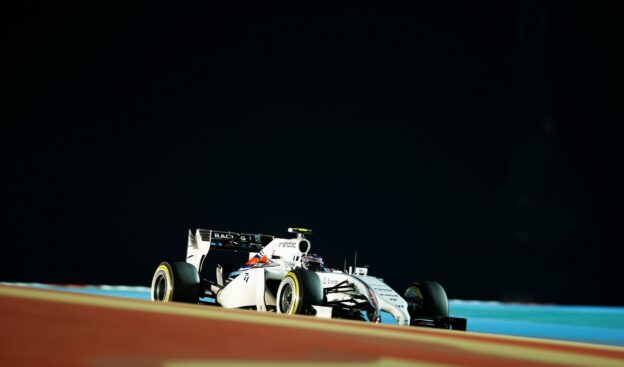Bahrain- It comes to life at night

Since it hosted its first race in 2004, Bahrain has been full of negative headlines.
From political unrest to dull, boring races, the event was swinging from bad press to more bad press.
However, that all changed last season when a bright person decided that its fortunes could be completely transformed by staging it at night.
Lewis Hamilton’s victory in last season’s race was as good as ever been seen in F1 and we reach this year’s race with excitement rather than dread.
Want to find out more? Of course you do…
The Bahrain International circuit was the first F1 track in the Middle East, and is located just 30 kilometres south-west of Manama, the capital city.
It is designed by modern F1 guru, or villain depending on your view, Hermann Tilke and typifies his long straight, slow corner style.
The track is very hard on tyres, and three stops is normally necessary round here but on-track action is usually pretty limited as drivers don’t want to ruin their rubber.
In 2010, we had one of the most anti-climactic races in history as Bahrain hosted the opening round of the season. With Michael Schumacher back after a three-year exile, Fernando Alonso making his Ferrari debut, and world champion Jenson Button partnering Lewis Hamilton at McLaren, it should have been a classic start to the season.
However, it was as processional as F1 has ever been and watching grass grow was seriously preferable.
The following year, F1 skipped the race as political tension spilled over and it was deemed unsafe but we returned in 2012 as Sebastian Vettel won.
Bahrain Track: three corners in detail
Turns 1 & 2
The first corner is actually very tight as the driver brakes down from over 330km/h to just over 60km/h. Delivering the correct engine braking support to square up the rear of the car without creating too much 'push' is the aim as the driver will need a stable car under braking but must still be able to turn in. Engineers will do this by tweaking the engine maps.
Turns 11 & 12
After a slow exit from Turn 11 the track goes uphill into Turn 12 so as well rapidly switching direction, the car is also climbing. This therefore puts the oil system under pressure as the fluids in the system move from side to side very quickly but are also squashed down in the tank as the altitude increases. To avoid engine starvation, where the oil moves away from the pumps, engineers will check the minimum levels in practice.
Turns 14 & 15
The driver must get the exit of Turn 14 completely right as it falls slightly off camber as it enters Turn 15; running wide will compromise the acceleration down the long straight.
Getting correct gear ratios helps in this respect, but finding the right balance is never easy as the circuit has a variety of corner speeds. Finding the sweet spot in the engine is therefore tricky, particularly on different fuel levels and pending DRS and KERS release patterns.
✅ Check out more posts with related topics:
















LAST 3 F1 Fan COMMENTS